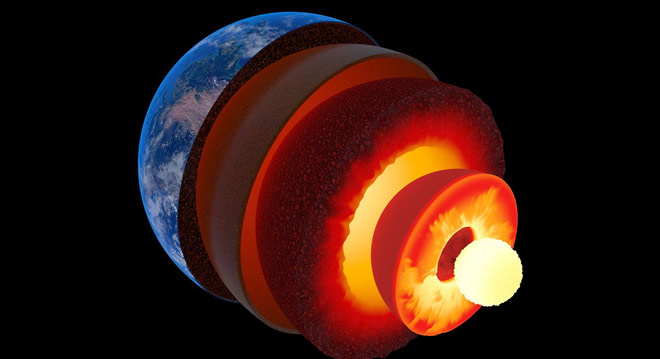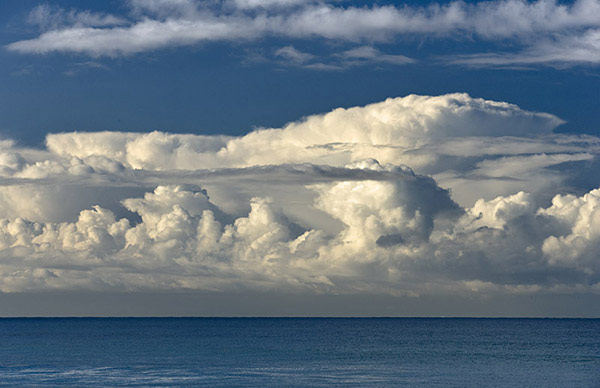Origin of Earth's name and other interesting facts
Below are unbelievable facts about Earth, the rocky planet we call 'Home' listed by the science and technology magazine Popular Mechanics (New York, USA) on the occasion of the 54th anniversary. The day the Earth was born (April 22, 1970 - April 22, 2024), please follow along.
Who named the globe "Earth"?
Unlike other planets in the Solar System, no data has been found to show how the name Earth came to be, who gave it that name and why.
Just know that the term "Earth" comes from Old English and High Germanic. Our 'home' is the only planet in the Solar System not named after a Greek or Roman god.

US Highway 66 is longer than the distance from the Earth's crust to the core
US Highway 66 (Route 66), a highway connecting East to West in the US, is 3,940 km long, nearly 1,000 km longer than the boundary between the Earth's crust and core (less than 3,000 km).
The boundary zone between the Earth's crust and core contains solid rock and liquid iron. This is the most complex region of the planet that greatly influences the existence of the surface world.
Earth is 10,000 times older than humans
It is estimated that the Earth is about 4.5 billion years old. Meanwhile, Homo Sapiens has existed for nearly 450,000 years. That is, 'human age' is only 1/10,000 of the planet's age.
Pressure at the Earth's core
According to scientists, the Earth's core has a radius of about 1,220 km, containing molten hot iron. The temperature here is estimated to reach 5,500 degrees Celsius.
The Earth's core consists of an inner core and an outer core. The pressure of the Earth's inner core is 3,000,000 atmospheres (standard atmosphere), nearly 3,000 times higher than the pressure at the deepest point on Earth (11,000 meters), which is 1,100 atmospheres.

Earth has a giant radioactive furnace
According to a 2011 study, the Earth generates up to 40 terawatts of heat (equivalent to 40,000 billion watts), radioactive decay in the Earth's core contributing half of that.
A magnitude 12 earthquake would cut the Earth in half
In history, there has never been an earthquake of magnitude 9.5 on the Richter scale on Earth. In theory, a magnitude 12 earthquake will never happen. But if that happens, the Earth will be cut in half and life on the planet could be destroyed.
Earth has more viruses than stars in the universe
According to American Dr. Katherine J. Wu, the Earth's ocean has about 1,000 billion trillion viruses in existence, 100 million times more than the number of stars in the universe that humans have found.
Another interesting information, in 1 teaspoon of soil, there are about 1 billion bacteria, equivalent to the number of people currently living in Africa.
Life is abundant at the bottom of the sea
According to Victoria Orphan, a geologist at Caltech, sediments at a depth of 2.5 km below the seabed are home to about 2.9 x 1029 microorganisms. Most of them develop extremely slowly compared to life in the surface world, it is estimated that cell division only occurs once every 10-1000 years.
Clouds help regulate Earth's temperature
If all the water droplets in the clouds were brought to the surface, it would form a thin liquid film covering the Earth. This liquid film is no thicker than a human hair, but it is extremely important for the climate and can help keep summer days cooler. On average, clouds keep the Earth 13 degrees cooler than when there are no clouds.

Sea levels could rise 75cm by 2100
According to Caltech climate scientist Tapio Schneider, sea levels could rise 60cm or more by the end of the century, leading to the disappearance of low-lying island nations, beautiful beaches and the destruction of marine ecosystems. .
The first Ozone hole has not yet completely healed
In 1985, the first hole in the Ozone layer was discovered, located just above Antarctica. This hole is still not healed even though 35 years have passed.
You should read it
- What happens when you travel through the heart of the earth?
- New discovery: Iron snow rains are happening inside the Earth's core
- How long does it take you to reach the other half through the center of the Earth vertically?
- How will a meteorite be found to crash into NASA Earth?
- History of Earth formation and 25 milestones (Part I)
- Google Earth is now available on most popular browsers
 Instructions for rounding numbers on Casio calculators
Instructions for rounding numbers on Casio calculators 5 shortest rivers in the world
5 shortest rivers in the world The battle between ants and African elephants
The battle between ants and African elephants Rotating rocket engines can help aircraft reach speeds of Mach 9
Rotating rocket engines can help aircraft reach speeds of Mach 9 Why do solar eclipses move from west to east when the Sun and Moon move from east to west?
Why do solar eclipses move from west to east when the Sun and Moon move from east to west? Each person's eye color is different from anyone else's, why is that?
Each person's eye color is different from anyone else's, why is that?